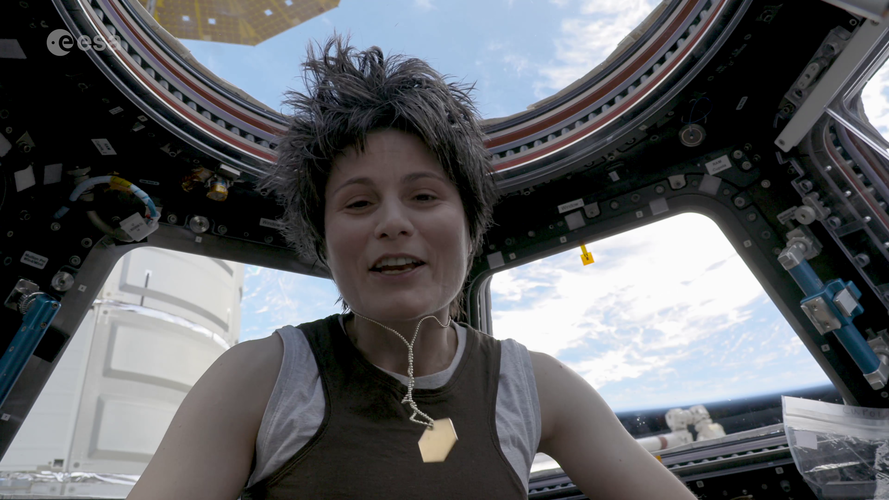
Copernical Team
AIR and Nigerian Space Agency sign MOU to collaborate on agriculture monitoring
 On July 4, 2022, the Aerospace Information Research Institute (AIR), Chinese Academy of Sciences (CAS) signed a memorandum of understanding (MOU) in Beijing through an online event with the National Space Research and Development Agency (NASRDA) of Nigeria to boost collaboration on crop monitoring with the goal to help the country achieve Zero Hunger goal, which is among 17 sustainable developme
On July 4, 2022, the Aerospace Information Research Institute (AIR), Chinese Academy of Sciences (CAS) signed a memorandum of understanding (MOU) in Beijing through an online event with the National Space Research and Development Agency (NASRDA) of Nigeria to boost collaboration on crop monitoring with the goal to help the country achieve Zero Hunger goal, which is among 17 sustainable developme Synspective releases First Image from its Small SAR Satellite "StriX-ss" that captures 3 cities around the world
 Synspective Inc., a SAR satellite data and analytic- solution provider, announced that it has successfully acquired its first image from its second SAR satellite, "StriX-ss".
"StriX-ss" was launched by Rocket Lab's Electron from New Zealand's Mahia Peninsula launch site on March 1, 2022 (JST) and put into target orbit at an altitude of 561km in a sun-synchronous orbit (SSO). Since then, it
Synspective Inc., a SAR satellite data and analytic- solution provider, announced that it has successfully acquired its first image from its second SAR satellite, "StriX-ss".
"StriX-ss" was launched by Rocket Lab's Electron from New Zealand's Mahia Peninsula launch site on March 1, 2022 (JST) and put into target orbit at an altitude of 561km in a sun-synchronous orbit (SSO). Since then, it Airbus to provide 42 satellite platforms and services to Northrop Grumman for the US Space Development Agency program
 Airbus U.S. Space and Defense, Inc., has been contracted to provide 42 satellite platforms as well as assembly, integration, and test (AIT), launch, and space vehicle commissioning support services to Northrop Grumman to satisfy the U.S. Space Development Agency's (SDA) Tranche 1 Transport Layer prototype constellation (T1TL) award.
The Transport Layer will serve as the backbone for SDA's
Airbus U.S. Space and Defense, Inc., has been contracted to provide 42 satellite platforms as well as assembly, integration, and test (AIT), launch, and space vehicle commissioning support services to Northrop Grumman to satisfy the U.S. Space Development Agency's (SDA) Tranche 1 Transport Layer prototype constellation (T1TL) award.
The Transport Layer will serve as the backbone for SDA's Kleos Space invests for future growth in the UK
 Kleos Space Ltd, the UK subsidiary of Kleos Space S.A., is to set up operations at the Space Park Leicester, a world-leading hub for innovative research, enterprise and education in space and
earth observation. Kleos is a 'space-powered' Radio Frequency Reconnaissance Data-as-a- Service (DaaS) and Mission-as-a-Service (MaaS) provider.
The new UK facility will provide access to a buoy
Kleos Space Ltd, the UK subsidiary of Kleos Space S.A., is to set up operations at the Space Park Leicester, a world-leading hub for innovative research, enterprise and education in space and
earth observation. Kleos is a 'space-powered' Radio Frequency Reconnaissance Data-as-a- Service (DaaS) and Mission-as-a-Service (MaaS) provider.
The new UK facility will provide access to a buoy China rejects 'concern' by NASA chief about Beijing militarizing the moon
 The Chinese government hit back on Tuesday at the head of the American space program over remarks he made in an interview that suggested Beijing is seeking to militarize the moon.
NASA Administrator Bill Nelson criticized China in the interview with German newspaper Bild and said there should be concern about Chinese efforts to explore the moon.
"We must be very concerned that Ch
The Chinese government hit back on Tuesday at the head of the American space program over remarks he made in an interview that suggested Beijing is seeking to militarize the moon.
NASA Administrator Bill Nelson criticized China in the interview with German newspaper Bild and said there should be concern about Chinese efforts to explore the moon.
"We must be very concerned that Ch Carnegie Mellon is reimagining nanosatellite capabilities with orbital edge computing
 Researchers at Carnegie Mellon University's College of Engineering are setting out on a mission to reimagine the capabilities of nanosatellites in low-Earth orbit.
Backed by a $7 million grant from the National Science Foundation's (NSF) Cyber-Physical Systems (CPS) Frontiers Program, the CMU initiative will transform constellations of nanosatellites into sophisticated distributed computin
Researchers at Carnegie Mellon University's College of Engineering are setting out on a mission to reimagine the capabilities of nanosatellites in low-Earth orbit.
Backed by a $7 million grant from the National Science Foundation's (NSF) Cyber-Physical Systems (CPS) Frontiers Program, the CMU initiative will transform constellations of nanosatellites into sophisticated distributed computin Rocket Lab to launch responsive space missions for National Reconnaissance Office
 Rocket Lab USA, Inc (Nasdaq: RKLB) reports its next two launches will be responsive space missions for the United States Government's National Reconnaissance Office. Launching from Rocket Lab Launch Complex 1 on two Electron rockets, Rocket Lab is scheduled to deploy satellites to space for the NRO within only 10 days of each other. NROL-162 ("Wise One Looks Ahead") will launch from Rocket Lab L
Rocket Lab USA, Inc (Nasdaq: RKLB) reports its next two launches will be responsive space missions for the United States Government's National Reconnaissance Office. Launching from Rocket Lab Launch Complex 1 on two Electron rockets, Rocket Lab is scheduled to deploy satellites to space for the NRO within only 10 days of each other. NROL-162 ("Wise One Looks Ahead") will launch from Rocket Lab L ESA astronaut selection in the final stages

The ESA astronaut selection has been progressing as planned, with phase two of the selection process ending in March this year, and phase three ending in June.
What do you hear, Starbuck?
 Video:
00:01:50
Video:
00:01:50
FedCon is one of Europe's largest science fiction conventions, its 2022 edition held earlier this month in Bonn in Germany. Actors from the many incarnations of Star Trek, as well as Star Wars, Doctor Who, and other science fiction shows met with thousands of fans.
ESA has been taking part in FedCon since 2015, with talks, panels, and a stand covering our space science, earth observation, and human exploration missions. At this year's event, scientists and engineers from ESTEC, ESOC, and the EAC gave talks about JWST, Rosetta, mission operations, and careers with ESA.
In addition, to help celebrate
Virgin Galactic taps Boeing subsidiary to build motherships

Virgin Galactic announced Wednesday that it is partnering with a Boeing subsidiary to manufacture the next generation of the twin-fuselage aircraft used to carry aloft the space tourism company's rocket ship.
Aurora Flight Sciences will build two of the special carrier planes at its facilities in Mississippi and West Virginia. Final assembly still will take place at Virgin Galactic's facility in Mojave, California, with the first mothership produced under the contract expected to enter service in 2025.
Each of the aircraft will be designed to fly up to 200 launches per year.
Virgin Galactic officials said that outsourcing the work will provide access to labor, minimize supply chain disruptions and lead to faster production times. The company has repeatedly pushed back the timeline for launching paying customers, with commercial service now expected in 2023.
Virgin Galactic CEO Michael Colglazier said the next-generation motherships will be integral to scaling up the company's operations.
"They will be faster to produce, easier to maintain and will allow us to fly substantially more missions each year," he said in a statement. "Supported by the scale and strength of Boeing, Aurora is the ideal manufacturing partner for us.




































